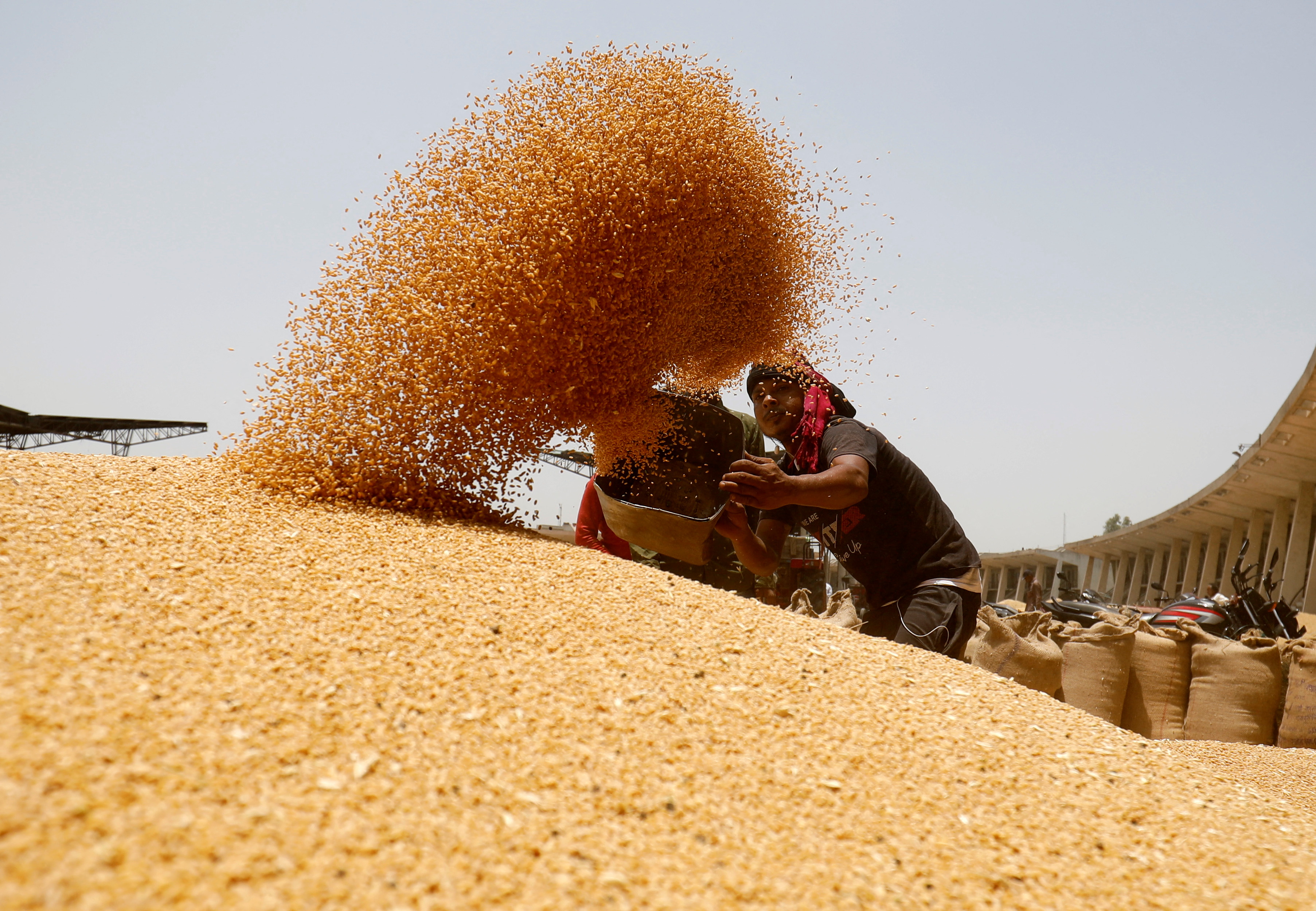India’s Bold Move: Allocating 5 Million Tons of Wheat to Bolster Price Stability
In a strategic maneuver aimed at reining in escalating wheat prices, the Indian government has unveiled a groundbreaking plan to allocate a substantial 5 million tons of wheat to bulk consumers. This resolute initiative underscores India’s commitment to safeguarding its citizens against the onslaught of rising food costs. By deploying this proactive measure, the government seeks to restore equilibrium to the wheat market, providing relief to both consumers and producers.
Unveiling the Strategy
Amid concerns over mounting food inflation, India’s policymakers have set in motion an innovative strategy to curb the soaring wheat prices that have been plaguing the nation. With the introduction of this comprehensive initiative, the government aims to not only tackle immediate challenges but also lay the groundwork for long-term food security. This masterstroke entails the allocation of an impressive 5 million tons of wheat to bulk consumers, which includes entities such as food processing units, distributors, and retailers.

The Rationale Behind the Move
The underlying rationale behind this groundbreaking move is rooted in the intricate dynamics of supply and demand. Wheat, being a staple food for a vast majority of the Indian population, plays a pivotal role in the nation’s food security. The recent surge in wheat prices has sent shockwaves through the agricultural sector and consumers alike, threatening the accessibility of an essential dietary component. The government’s unwavering commitment to ensuring affordable sustenance for its citizens has driven the decision to intervene robustly in the wheat market.
Mitigating Price Volatility
Price volatility in the agricultural sector is not a new phenomenon. However, the magnitude of the current challenge necessitates resolute action. The allocation of 5 million tons of wheat to bulk consumers is poised to act as a stabilizing force in the market. By injecting a substantial quantity of wheat, the government aims to alleviate supply shortages that have been driving up prices. This intervention not only addresses the immediate concern of high prices but also aims to establish a buffer against future fluctuations.

Empowering Stakeholders
At the heart of this strategic allocation lies the empowerment of stakeholders across the value chain. Food processing units, distributors, and retailers are poised to benefit from a more stable pricing environment. This, in turn, will enable them to streamline their operations, plan effectively, and pass on the benefits to end consumers. The proactive stance adopted by the government not only nurtures economic stability but also fosters an environment conducive to sustained growth.
Charting the Course Ahead
While the allocation of 5 million tons of wheat marks a significant step towards restoring price stability, the government’s vision extends beyond this immediate intervention. A multi-pronged approach that focuses on increasing domestic production, investing in advanced agricultural practices, and bolstering infrastructure is imperative to ensure long-term food security. The government’s commitment to facilitating a thriving agricultural ecosystem is underscored by its determination to empower farmers, enhance productivity, and foster innovation.
Fostering Collaborative Partnerships
Central to the success of this visionary initiative is the collaborative spirit that it engenders. The government’s proactive engagement with various stakeholders across the agricultural spectrum sets a precedent for effective public-private partnerships. By working hand in hand with food processing units, distributors, and retailers, the government not only ensures the equitable distribution of resources but also paves the way for a symbiotic relationship that bolsters the entire supply chain.
Addressing Socioeconomic Impacts
Beyond its economic implications, the allocation of 5 million tons of wheat resonates deeply with the broader socioeconomic fabric of the nation. With a significant proportion of India’s population reliant on wheat as a dietary staple, the availability and affordability of this essential commodity have far-reaching effects. By stabilizing prices, the government takes a stride towards alleviating the burden on vulnerable communities, promoting food security, and fostering social cohesion.

Elevating India’s Global Standing
The audacious step of allocating a substantial quantity of wheat to bulk consumers not only shores up domestic markets but also elevates India’s standing on the global stage. As a nation teeming with agricultural potential, India’s unwavering commitment to tackling food price volatility demonstrates its mettle as a responsible and forward-thinking global player. This move showcases India’s resolve to address challenges with innovative strategies, which, in turn, could inspire other nations grappling with similar issues.
Anticipating Challenges and Adapting
While the allocation of 5 million tons of wheat marks a substantial stride forward, the road ahead is not devoid of challenges. Fluctuating climate patterns, evolving consumer preferences, and unforeseen market dynamics could impact the efficacy of this intervention. Therefore, the government’s commitment to adaptability and resilience remains crucial. By monitoring market trends, engaging in continuous dialogue with stakeholders, and adopting a flexible approach, India can ensure that its efforts remain aligned with the evolving needs of its citizens.
In conclusion, the allocation of 5 million tons of wheat to bulk consumers represents more than just a strategic economic move; it signifies a commitment to the welfare of the nation’s populace and a testament to India’s capacity to navigate complex challenges.
With its collaborative approach, socioeconomic awareness, and global outlook, the government sets a precedent for effective governance that prioritizes both short-term relief and long-term sustenance. As India strides confidently into the future, this initiative stands as a resounding affirmation of its dedication to stability, growth, and prosperity for all.


